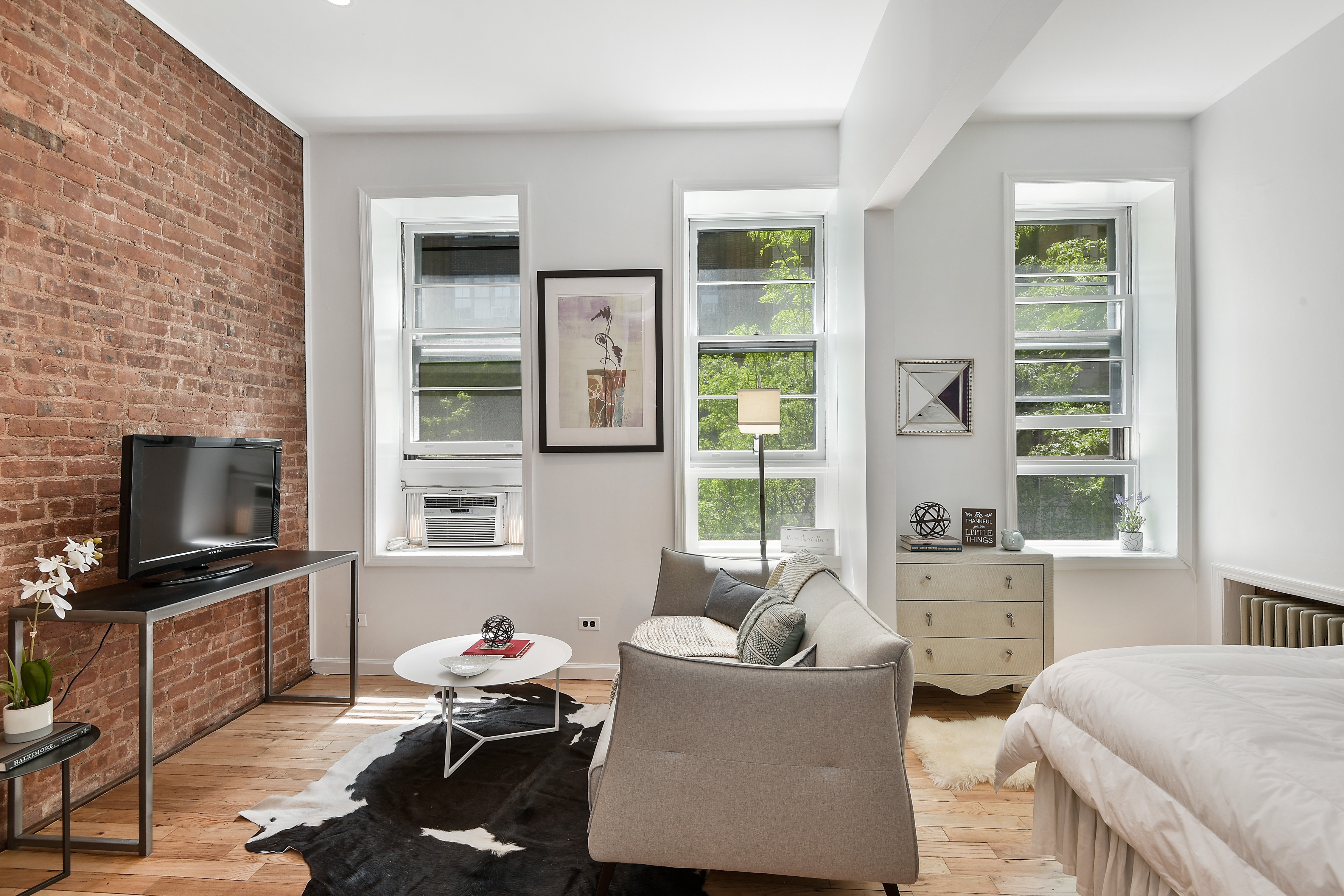You need to stage your apartment to sell it. Who pays for that?

Lindsay Owen of Compass made significant changes to one client's dining room to get it open house-ready.
Compass/Lindsay Owen
Thinking of putting your place on the market and wondering how you can gain a competitive edge?
One of the flashier ways to make an apartment or house pop (both on a computer screen, and at a showing) is staging, or the process of spiffing up a place by making any number of improvements: painting, swapping out furniture, replacing rugs and light fixtures, doing minor renovations. (It can also involve small tweaks such as a few well-placed tchotckes and some fresh flowers.)
You can probably spring for a few bouquets, but what about everything else? When an apartment is staged in New York City, who pays for it? As with most real estate scenarios in New York City, it tends to vary, depending on the listing, the agent, and the brokerage. Some brokers have furniture that they will lend you, some will share the costs, and one firm has launched a service that will cover the cost of staging and bill you at closing.
What you can expect
“Every sale is different. The clients are different, their timelines and price goals are different, the readiness of their properties is different. So you can imagine there's no one-size-fits-all approach to staging,” says Alison McQueen of Corcoran. “What is consistent is nicely staged homes sell for more. If you already have nice furniture and decor in your home, your agent can work with what you have. They can guide you to reposition furniture and add rugs, art, pillows, to give your home a fresh look.”
Some agents, like McQueen, see staging as a “value-add” component of their services, and have an assortment of pieces—furniture, rugs, knick knacks—stashed away in a storage space to pull upon when needed.
“I have furniture and props to use, and will rent and/or buy when needed, “ she says. “I know some brokers will split the cost of staging with their clients under certain circumstances, whereas others ask clients to take on the task of hiring a stager themselves. It's an agreement each team makes for themselves within their own comfort level and personal budget.”


Decor vs. larger issues
Jimmi Circosta, a broker at Citi Habitats, also has a storage space filled with furniture, but stresses that putting in a new living room set often isn’t enough to bring something up to sell-worthy standards.
“I look at the apartment itself: Does it need to be painted? Do the light switch covers need to be replaced? Is there an old prewar tub that hasn’t been reglazed in 25 years?” he asks.
If the answer to questions like these is “yes," Circosta says the burden of those costs typically goes to the seller. And if his clients do need to update their furnishings in a significant way, he drafts a proposal to stage an apartment with pieces from a rental company such as Cort Furnishings. (He estimates the cost for staging a studio for three months at about $1,500, with a two-bedroom running as much as $7,500. “If you price the apartment right you should be able to sell within three months,” he says. Even in those circumstances, Circosta is spending several hundred dollars of his own on additional decorative items.)

Lindsay Owen of Compass (yet another agent who has helped clients stage with pieces from her storage space stash) says staging can be an essential part of a selling strategy, such as when an apartment is vacant, or other apartments in the same building are staged. “It’s important to stage if it’s required,” she says. (Like Circosta, Owen says the cost of major improvements like painting or finishing floors falls squarely on the owner.)
Some places will front you
Of course, not everyone has the cash upfront to make their home look shelter-magazine ready. To address that funding issue, Compass has introduced a new program in October of last year, “Compass Concierge,” through which Compass covers the cost of various home improvements (everything from deep cleaning to staging to decluttering and more), and then invoices sellers for the total cost of the work, with no additional fees, at the time of closing.
Clients choose what work to do, and which vendors to work with (as long as they are licensed and insured), and approve costs. (If the listing agreement expires and isn't renewed, then the seller agrees to pay Compass back for the cost of the work done.) The program has already received more than 1,200 applications from clients and has completed more than 600 projects. “It’s been a lifesaver for sellers,” Owen says.
Getting clients to live with stuff that is not their own can be a harder sell. Owen recalls working on one apartment that needed a pretty serious update, so all of the clients' furniture had to be moved out.
“The whole living space needed staging,” she says. "Ultimately, the owners understood it needed to be done. And they got their full asking price to buy their forever home.”


























